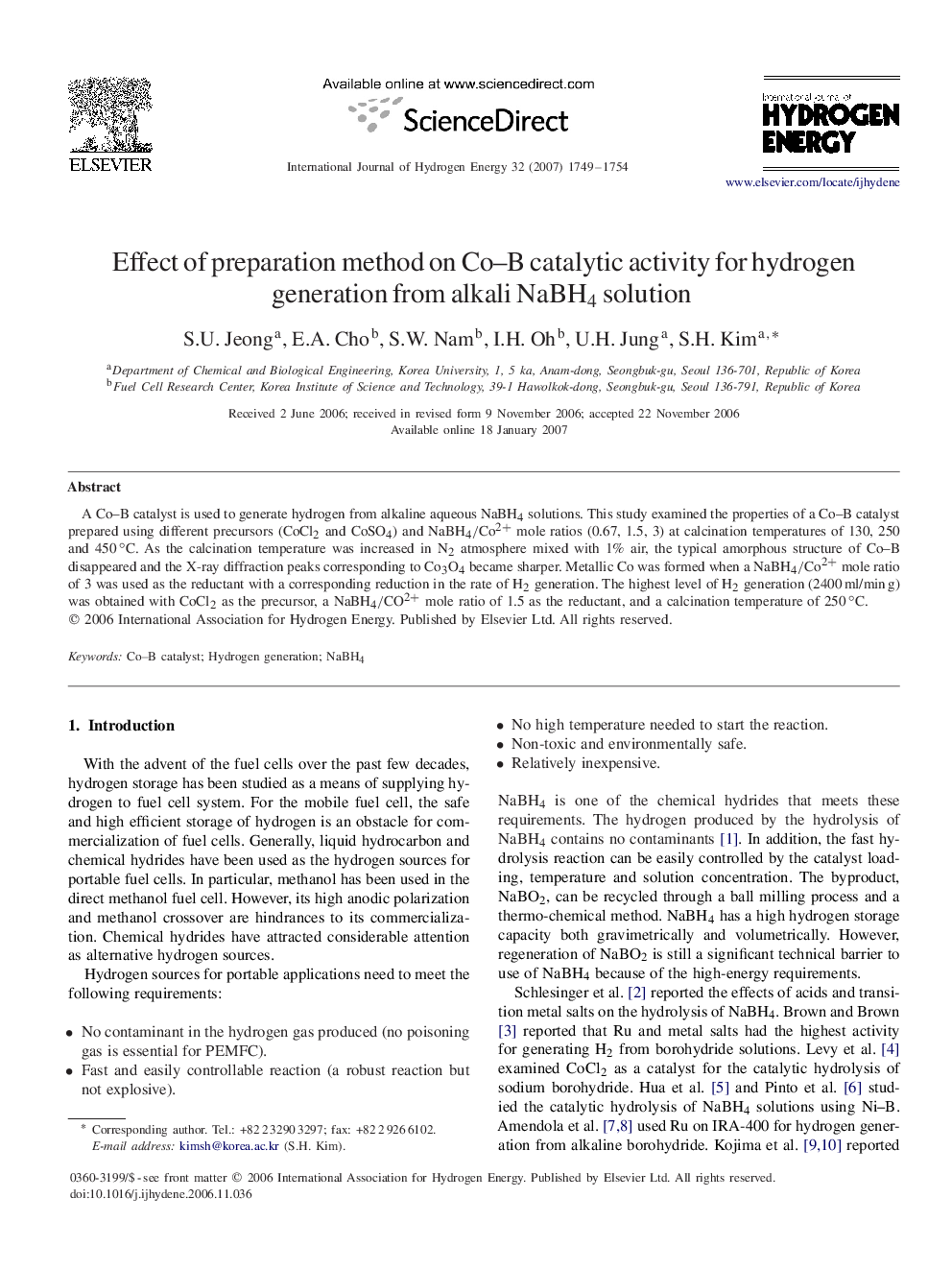| Article ID | Journal | Published Year | Pages | File Type |
|---|---|---|---|---|
| 1274970 | International Journal of Hydrogen Energy | 2007 | 6 Pages |
A Co–B catalyst is used to generate hydrogen from alkaline aqueous NaBH4NaBH4 solutions. This study examined the properties of a Co–B catalyst prepared using different precursors (CoCl2CoCl2 and CoSO4CoSO4) and NaBH4/Co2+NaBH4/Co2+ mole ratios (0.67, 1.5, 3) at calcination temperatures of 130, 250 and 450∘C. As the calcination temperature was increased in N2N2 atmosphere mixed with 1% air, the typical amorphous structure of Co–B disappeared and the X-ray diffraction peaks corresponding to Co3O4Co3O4 became sharper. Metallic Co was formed when a NaBH4/Co2+NaBH4/Co2+ mole ratio of 3 was used as the reductant with a corresponding reduction in the rate of H2H2 generation. The highest level of H2H2 generation (2400 ml/min g) was obtained with CoCl2CoCl2 as the precursor, a NaBH4/CO2+NaBH4/CO2+ mole ratio of 1.5 as the reductant, and a calcination temperature of 250∘C.
